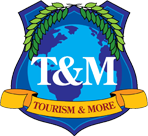Turning your marketing into an art form
November 2002
Travel and tourism professionals spend a great amount of time, money and effort in an attempt to develop good marketing. From research to post sales analysis, the desire for the best marketing possible often dominates industry’s business agenda. During the last decade, marketing has been statistically driven. Indeed, travel and tourism professionals have come almost entirely to depend on the “numbers”. Quantitative methods yield a great amount of information. Nevertheless, it is a mistake to depend on any one-research method or marketing technique. Marketing is as much an art as it is a science. Science assumes a consistency that art does not. Because tourism and travel marketing must deal with individual whims, likes, and histories, the artistic side of the marketing field cannot be ignored. To see marketing a merely a numbers-driven field is not only to know only half the picture, but can lead to disastrous results. Instead a good marketing program should encompass both the quantitative and qualitative or “artistic” side, both techniques need to be used and both techniques ought to be in harmony. To help you add the artistic component to your marketing plan consider the following:
- Never develop a marketing strategy from the beginning. The best marketing strategies start with the final end in mind. What do you want to accomplish? Will you pleased with the final results? Keep your eye on the future by doing good visioning first (see the Sept, 1998 edition of “Tourism Tidbits” at <http://www.unlv.edu/Tourism/tidbits.html> for more on the concept of “visioning”) and only then worry about the marketing details. Never allow details to bog you down in the present, instead develop realistic future goals and then a plan to help you arrive at that “marketing destination.”
- Ask yourself questions. To determine your place within the multifaceted tourism industry. Do not only ask yourself such important questions as: “Who is your market,” and “What are your goals?” Experience and gut feelings can often add profundity to the numbers. Thus, take the time to look at your ads. Do they attract you? Would you visit the locale given your present mood? Does the advertisement make you laugh and can you remember it five minutes after you have seen/heard it?
- Never forget that numbers tell a story. If you misread the statistics you can get a very incorrect view of your business. Make sure that surveys accurately reflect what you need to know not what you want to know. Once your data is collected and analyzed take the data to a professional to challenge your assessment. We all tend to be blind to unpleasant data and know how to hid them.
- Do not forget that most people do not see themselves as innovators. Does the ad ask the person to be what he or she is not? Will your marketing fail because it requires your employees to innovate? Not only does the average employee not see him/herself as a person whose task it is to be creative, but often managers see themselves as enforcing policy rather than permitting the creative juices to flow. Encourage innovation. The only bad idea is one that is never considered.
- Develop a brand name for your locale/destination. Artistic marketing requires that you set yourself a part from the others. Why is your resort, destination, or beach different? What can make you special? Are you developing a total package for the brand or are you emphasizing so many of the components that the customer cannot connect with the total experience. Few travelers seek just one component in their travel experience; most leisure travelers want a total experience. Make sure your marketing reflects that total travel/vacation/experience.
- Never forget that no brand lasts forever. Brands are not static. What may work in one market may fail in another as conditions change. Consider both the fast changing impacts as the economy and the political situation, consider also changes in style, diets, and fads, and finally carefully examine the slower moving changes such as demographics, and climate conditions. All of these factors impact your brand and your marketing efforts. A computer can crunch the numbers, but in the end it is the “artist” in you who must interpret the trends and decide which ones will impact your locale.
- Make customer complaints a guideline. Too many travel destinations ignore their customers’ complaints. Being defensive or angry deprives the travel professional of great information. Few travelers want to hear that you cut back service so as to increase your profit margin, few visitors want to hear about your hard day. Instead listen to what they are saying and creatively use that information within your marketing and product development campaign.
- Watch the news and pay attention to trends. Too many travel professionals forget that travel conditions change not only because of what they do, but also due to external causes. Never assume just one element causes all problems or successes. For example, post 9-11 travel dropped partially due to travel fear, but also due to economic declines and also due to many travelers’ perceptions of poor service. To have considered only one of these components would lead to a major marketing failure.
- Think about what you are doing well and what you are doing poorly. Never forget that in the end good marketing requires a good product. Without good marketing a good product may not succeed, but good marketing without a good product is bound to fail. Make sure that your marketing efforts also encompass good product development. Travel and tourism are elective products, that is to say, never forget that no leisure traveler ever needs to visit your locale or to return to it. Thus, the best marketing starts with the idea that we must win over the customer every time.



